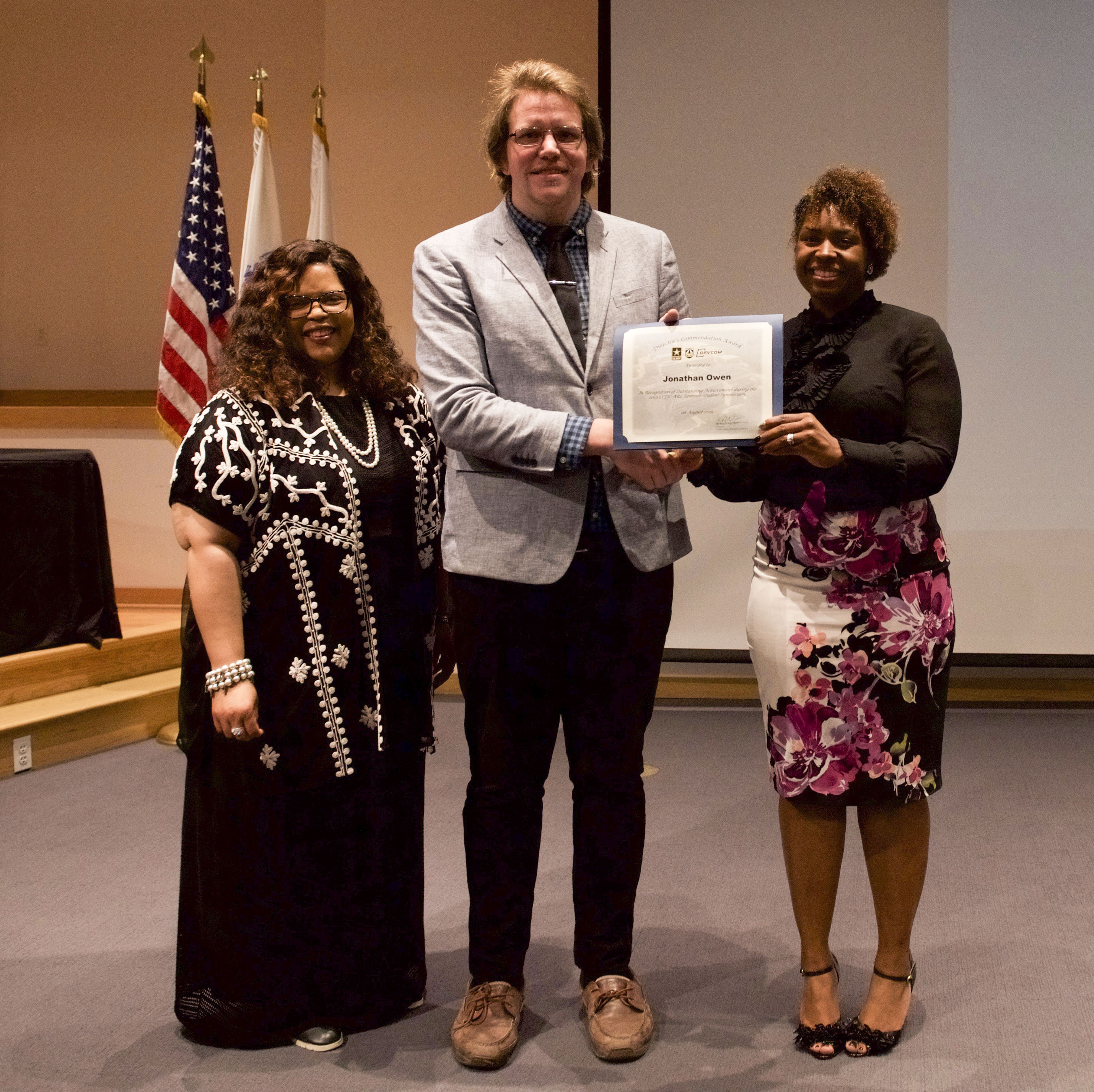KU Radar Student Honored at Army Research Laboratory
 KU electrical engineering Ph.D. student Jonathan Owen spent the summer of 2019 as a graduate intern at the Army Research Laboratory (ARL). In a competition for graduate summer intern research, Owen placed first among more than 200 students in his directorate, and placed third among more than 1,000 students at ARL.
KU electrical engineering Ph.D. student Jonathan Owen spent the summer of 2019 as a graduate intern at the Army Research Laboratory (ARL). In a competition for graduate summer intern research, Owen placed first among more than 200 students in his directorate, and placed third among more than 1,000 students at ARL.
Each summer, ARL hosts more than 1,000 undergraduate and graduate students to participate in a variety of research endeavors relevant to the Army across six directorates. Within these directorates are a multitude of divisions, which themselves contain many different branches, organized according to the tremendous array of research topics being investigated at ARL. At the end of the summer, a competition is held to gauge the novelty and impact of each student’s accomplishments during their time at ARL, with the winner of each branch progressing to the division level, then directorate, and ultimately to lab-wide level.
Photo: Ph.D. student Jon Owen (center)
Owen spent his summer working in the RF Signal Processing & Modeling Branch, which is part of Electronics & RF Division within the Sensors & Electron Devices Directorate (SEDD). His work focused on advancing cognitive radar capabilities within a software-defined platform. Owen is part of a collaborative team of researchers that includes his Ph.D. advisor, KU EECS Professor Shannon Blunt, ARL researchers Kelly Sherbondy and Anthony Martone, and several other faculty and students from Penn State, Virginia Tech, and Baylor who have been charged by Rapid Reaction Technology Transition Office within the Office of the Under Secretary of Defense for Research & Engineering to demonstrate an operational prototype of cognitive radar. Specifically, this emerging technology is one of the possible ways to address rapidly growing spectral congestion, largely driven by demands for increased wireless communication infrastructure, whereby a radar continuously senses the presence of dynamically changing radio frequency interference (RFI) within its band and then rapidly adjusts the structure of its transmitted waveforms on an on-the-fly basis to compensate.
Owen’s contribution to this effort involved the waveform and signal processing development and subsequent implementation to facilitate real-time operation, which means the radar would have the capability to sense RFI and autonomously change its behavior at speeds for which only computers are capable. His hard work paid. He won the student competition at the branch level, then the division level, and then the SEDD directorate level. In total, this comprises more than 200 student competitors. He ultimately was awarded a third-place finish at the final lab-wide level, which encompassed all students hosted by ARL this summer.
“We were not surprised Jon did so well at the ARL graduate competition for summer internship research,” says Anthony Martone, one of his ARL mentors. “Jon did an outstanding job working to get the various KU-developed waveforms to work on the software defined radar hardware platform this summer. His work leveraging the NI LabVIEW architecture to get the ‘detect to notch’ fully working on the SDRadar's FPGA was a crucial step in providing a real-time capability.”
“At the risk of sounding blasé, this outstanding performance is what I generally expect of Jon because he is extremely bright and possesses seemingly limitless energy,” Blunt said. “This result also speaks very well of the strong radar education and research program at KU and the great collaborators we have at ARL and among the other universities in this group.”